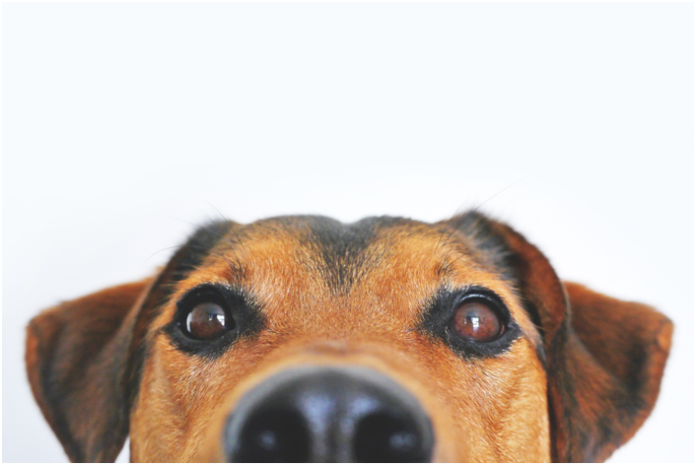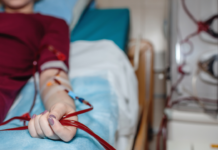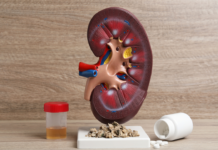For Educational Purposes Only.
Each kidney contains thousands of nephrons, which are the microscopic units of the kidney. When a pet is young and healthy, not all nephrons are working all of the time; some of the nephrons are held in reserve. As the pet ages or if the kidneys are damaged, some nephrons die, and other resting nephrons take over the work of those that die.
Eventually all the remaining nephrons are working, and there are no extra nephrons remaining, so kidney damage continues, and a pet will start showing signs of CKD. Unfortunately, by the time a pet shows signs of CKD, the damage is severe. There is no cure for CKD, and it is usually fatal within a few months to years, but various treatments can still keep the pet comfortable with a good quality of life. The signs for CKD may be severe, or they may be subtle and slowly progressive. Despite the chronic nature of the disease, sometimes signs can appear suddenly. Some of the more common signs of CKD include drinking too much water and then urinating large volumes, vomiting or diarrhea, lack of appetite and weight loss, general depression, anemia, and weakness1. Other signs may include bone fractures, sudden blindness due to high blood pressure, itchy skin, bleeding in the stomach, or bruises, but these symptoms are much less common1. Signs that may be seen when checking the pet include dehydration, weight loss, or pale gums and mouth ulcers1. Blood and urine tests must still be run in order to diagnose CKD, as these symptoms may stand for other diseases as well.
Pets with severe signs may be hospitalized for fluid and intravenous drug treatment to reduce the amount of waste products in their body. Many pets with CKD will feel better in response to treatment with IV fluids but if the kidney disease is extremely severe the pet may not respond to treatment. Those pets that are still eating and not showing severe signs are treated with a variety of treatments, often introducing treatments incrementally as new signs develop. This approach is called “conservative” compared to the more aggressive treatments such as hospitalization for fluid therapy, dialysis or kidney transplantation2. Since CKD is not a disease that can be cured, treatments are designed to reduce the work the kidneys need to perform, to replace substances that may be too low (such as potassium) and to reduce wastes that accumulate such as urea (generated by the body from proteins) and phosphorus2. The initial response to conservative therapy may be relatively slow, sometimes taking weeks to months to see a response2.
By feeding pets a low quantity, but high-quality protein diet that contains an appropriate amount of fats and carbohydrates, the pet’s body can use the protein for replacing the cells and tissues and use the fat and carbohydrates for energy. High quality proteins could include meats and eggs, as opposed to low quality proteins such as cereals and grains. Since dehydration can occur, it is important to keep supplying water to the pets. It is also important to keep the pets in a stress-free environment, as stress can encourage or discourage eating and drinking.
Sponsor: Kibow Biotech® 
References
- Washington State University College of Veterinary Medicine. (na). Chronic Kidney Disease and Failure. Retrieved from https://www.vetmed.wsu.edu/outreach/Pet-Health-Topics/categories/diseases/chronic- kidney-disease-and-failure
- Washington State University College of Veterinary Medicine. (na). Chronic Kidney Disease and Failure. Retrieved from https://www.vetmed.wsu.edu/outreach/Pet-Health-Topics/categories/diseases/chronic- kidney-disease-and-failure




